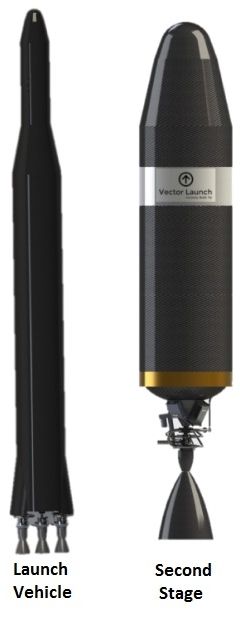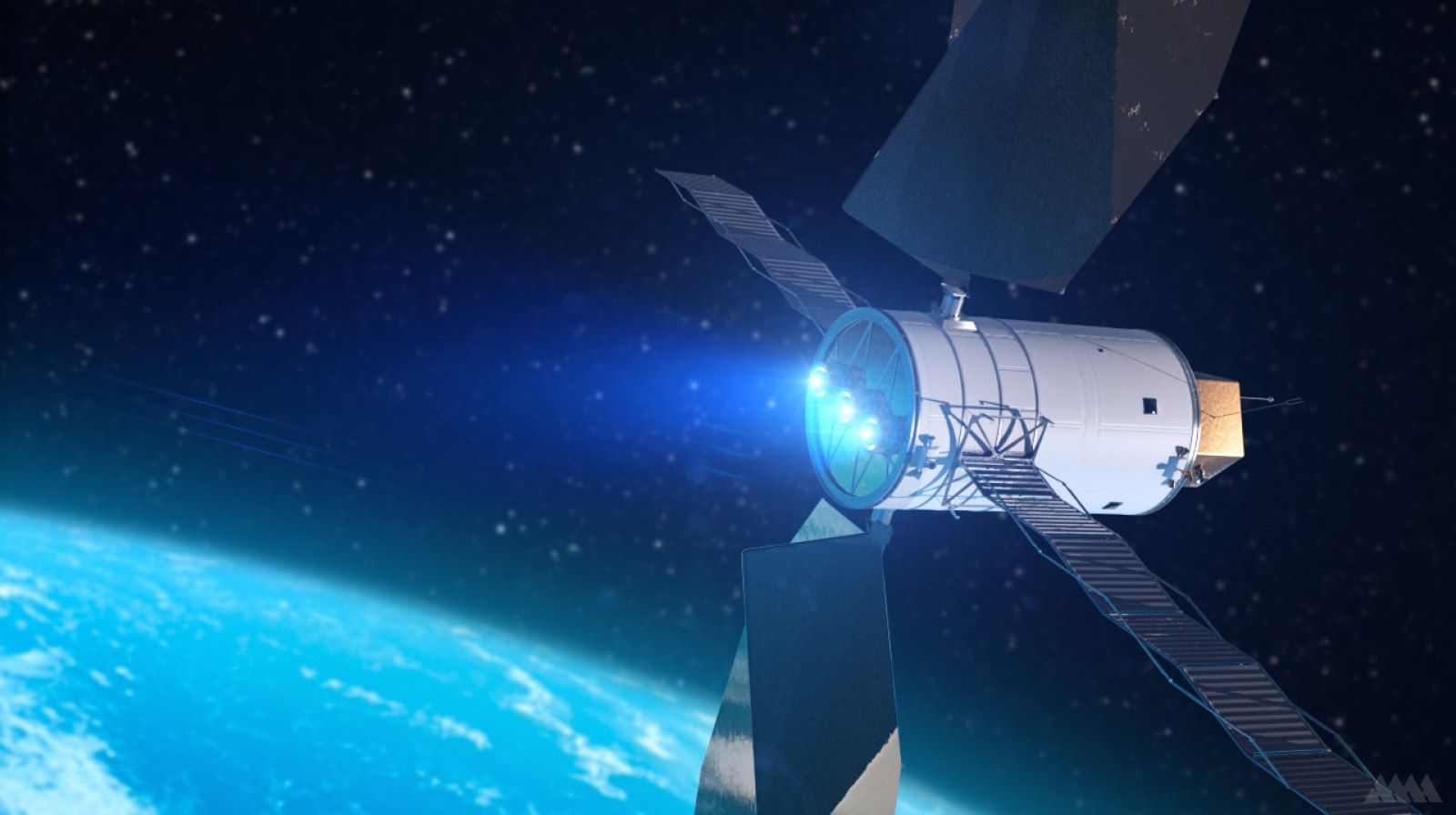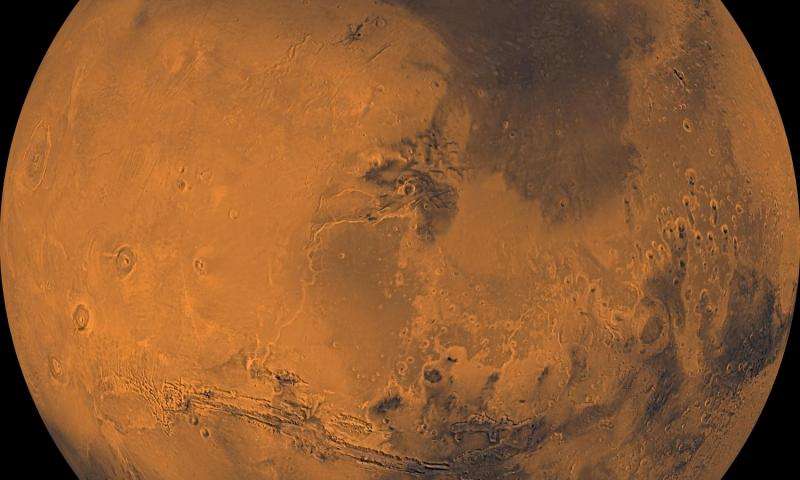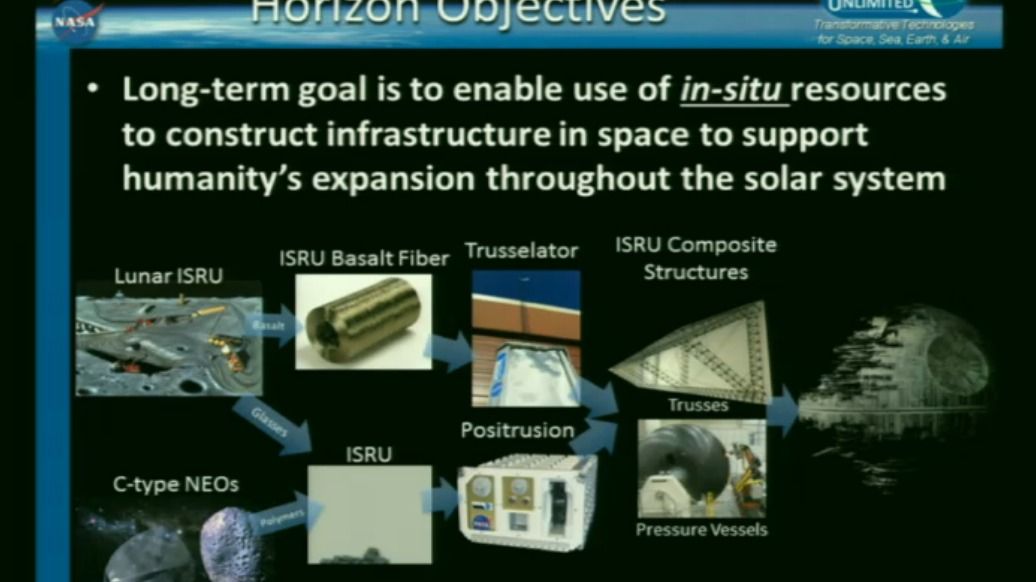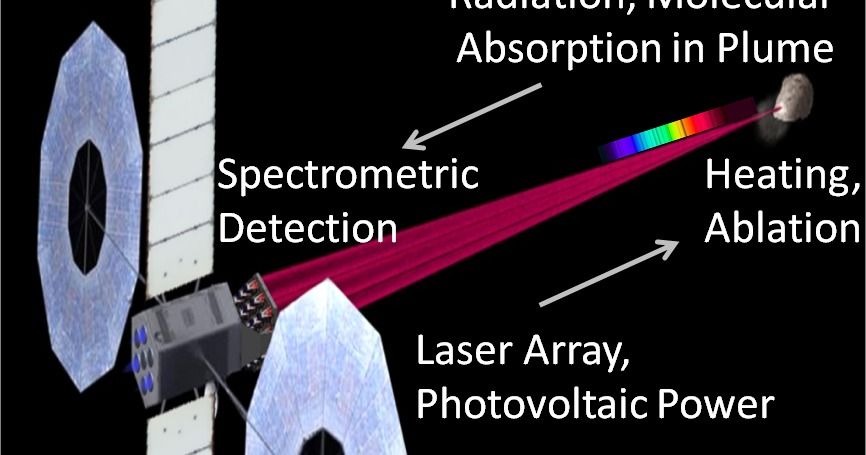Archive for the ‘space travel’ category: Page 484
Apr 25, 2016
LISTEN LIVE @ 11:30 am ET: NASA to Discuss Solar Electric Propulsion
Posted by Sean Brazell in categories: futurism, space travel
NASA will hold a teleconference press briefing on Thursday, April 21, to detail its latest advancements in solar electric propulsion for deep-space missions. The briefing will begin at 11:30 a.m. EDT (1530 GMT) on NASA’s News Audio page, and will be embedded below if possible once it goes live. (Note: The window below will play NASA TV until the briefing time.)
From NASA:
“Tuesday’s award of a contract to Aerojet Rocketdyne, Inc. for the design and development of an advanced electric propulsion system is the latest SEP milestone. A new electric propulsion system could significantly advance the nation’s commercial space capabilities, and enable future deep space missions, including NASA’s Journey to Mars.”
Apr 25, 2016
Holographic Wormhole Drive: Breakthrough in “Warp Drive” Faster than light (FTL) Spaceship Design
Posted by Andreas Matt in category: space travel
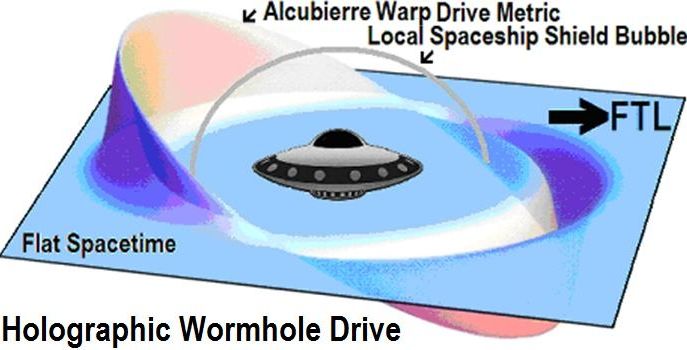
Older…thoughts?
Faster than light (FTL) space travel — the stuff of Science Fiction? Recent models require a Jupiter size negative mass-energy to operate. Now R. Amoroso has solved this problem in a radical new approach called the “Holographic Wormhole Drive”. — PR11498381.
Apr 22, 2016
NASA seeks industry ideas for an advanced Mars satellite | Phys.org
Posted by Odette Bohr Dienel in categories: satellites, space, space travel
“NASA is soliciting ideas from U.S. industry for designs of a Mars orbiter for potential launch in the 2020s. The satellite would provide advanced communications and imaging, as well as robotic science exploration, in support of NASA’s Journey to Mars.”
Tag: Mars
Apr 17, 2016
Megawatt beam propulsion by 2023 and Gigawatts by 2030
Posted by Andreas Matt in categories: military, space travel
California Polytechnic State University researchers propose a 100 kilowatt space based laser system capable of probing the molecular composition of cold solar system targets such as asteroids, comets, planets and moons from a distant vantage. This system uses existing technology and only some needs refinement. All of it looks achievable in the next 3 to 5 years. They have NASA NIAC funding. They have detailed designs for a 900 kilowatt system that would use two Falcon heavy launches.
The military laser segment will be about a $5 billion per year market by 2020. There is a large multi-billion commercial laser market. Those markets will drive improvements in laser efficiency and technological improvements which will be leveraged for space based systems or ground based lasers for space beam propulsion applications.
Continue reading “Megawatt beam propulsion by 2023 and Gigawatts by 2030” »
Apr 16, 2016
All of the technology is nearly ready for megawatt space based laser systems for science and planetary defense
Posted by Klaus Baldauf in categories: electronics, energy, science, space travel
California Polytechnic State University researchers propose a system capable of probing the molecular composition of cold solar system targets such as asteroids, comets, planets and moons from a distant vantage.
Their concept utilizes a directed energy beam to vaporize or sublimate a spot on a distant target, such as from a spacecraft near the object. With sufficient flux, our published results indicate that the spot temperature rises rapidly, and evaporation of materials on the target surface occurs (Hughes et al., 2015; Lubin and Hughes, 2015; Lubin et al., 2014). The melted spot serves as a high-temperature blackbody source, and ejected material creates a molecular plume in front of the spot. Molecular and atomic absorption of the blackbody radiation occurs within the ejected plume. Bulk composition of the surface material is investigated by using a spectrometer to view the heated spot through the ejected material. They envision a spacecraft that could be sent to probe the composition of a target asteroid, comet or other planetary body while orbiting the targeted object. The spacecraft would be equipped with an array of lasers and a spectrometer, powered by photovoltaics. Spatial composition maps could be created by scanning the directed energy beam across the surface. Applying the laser beam to a single spot continuously produces a borehole, and shallow sub-surface composition profiling is also possible.
Their initial simulations of laser heating, plume opacity, material absorption profiles and spectral detectivity show promise for molecular composition analysis. Such a system has compelling potential benefit for solar system exploration by establishing the capability to directly interrogate the bulk composition of objects from a distant vantage. They propose to develop models, execute preliminary feasibility analysis, and specify a spacecraft system architecture for a hypothetical mission that seeks to perform surface molecular composition analysis and mapping of a near-earth asteroid (NEA) while the craft orbits the asteroid.
Apr 16, 2016
Photon Propulsion Could Launch Spacecraft To Mars In Days
Posted by Klaus Baldauf in categories: energy, physics, space travel
Scientists say recent advances in laser propulsion technology could make it possible for spacecrafts to reach Mars in as little as 3 days using photon propulsion.
The concept was shared by Philip Lubin, a physics professor at the University of California, Santa Barbara at the NASA Innovative Advanced Concepts (NIAC) symposium. Ultimately, the method seeks to place an ultra-powerful laser in Earth’s orbit, that would use photon pressure to power a “sail-equipped” spacecraft. [ESA To Build “Moon Village” by 2030].
Apr 16, 2016
Stephen Hawking: Human Aggression Could ‘Destroy Us All’
Posted by Aleksandar Vukovic in categories: existential risks, space travel
I couldn’t agree more…aggression and recklessness.
Stephen Hawking may be getting some Hollywood love for “The Theory of Everything,” a biopic about his life that earned actor Eddie Redmayne the best actor Oscar at last night’s Academy Awards. But that hasn’t stopped the world-famous physicist from issuing yet another warning about humanity’s impending doom.
Human aggression threatens to destroy us all, Hawking said during a tour of London’s Science Museum last week. The remark was in response to a question about what human shortcomings he would most like to alter. Hawking suffers from a neurological disease similar to Lou Gehrig’s disease, or amyotrophic lateral sclerosis (ALS).
Continue reading “Stephen Hawking: Human Aggression Could ‘Destroy Us All’” »
Apr 16, 2016
Micro spaceships powered by lasers to search for alien life
Posted by Karen Hurst in categories: alien life, computing, internet, mobile phones, robotics/AI, space travel
Microscopic spaceships powered by Earth-based lasers are being developed to hunt for extra-terrestrial life in Alpha Centauri, the closest star system to ours.
The £70m Breakthrough Starshot concept involves creating a tiny robotic spacecraft, no larger than a mobile phone chip, which would carry cameras, thrusters, a power supply and navigation and communication equipment.
Physicist Stephen Hawking, Facebook founder Mark Zuckerberg and Russian internet billionaire Yuri Milner have all joined the project’s board giving it major backing.
Apr 15, 2016
Membrane spacecraft with 7.7 kW/kg power-to-weight ratio and 4000 ISP
Posted by Klaus Baldauf in categories: solar power, space travel, sustainability
A ‘brane’ is a dynamical object that can propagate through spacetime. Flattening a spacecraft into a membrane, or 2-brane, can produce a low mass vehicle with ultra-high power-to-weight ratio (7.7 kW/kg using thin film solar cells). If most of this power is used by an array of thinned, distributed electrospray thrusters with a specific impulse of 4000 s, a Brane Craft could start in low Earth orbit, land on Phobos, and return to low Earth orbit.
Other possible targets include any near-Earth asteroid and most main belt asteroids. Propellant is stored as a liquid within a 10-micron wide gap between two Kapton sheets that form the main structure of the Brane Craft.
This NASA NIAC project will study how to design an ultra-light dynamic membrane spacecraft, with 3-axis attitude determination and control plus navigation, that can significantly change both its shape and orbit. Conventional sensors like star trackers will have to be replaced by 2-dimensional alternatives. Estimated mass is about 35 grams for a 1 square meter Brane Craft.
Continue reading “Membrane spacecraft with 7.7 kW/kg power-to-weight ratio and 4000 ISP” »
